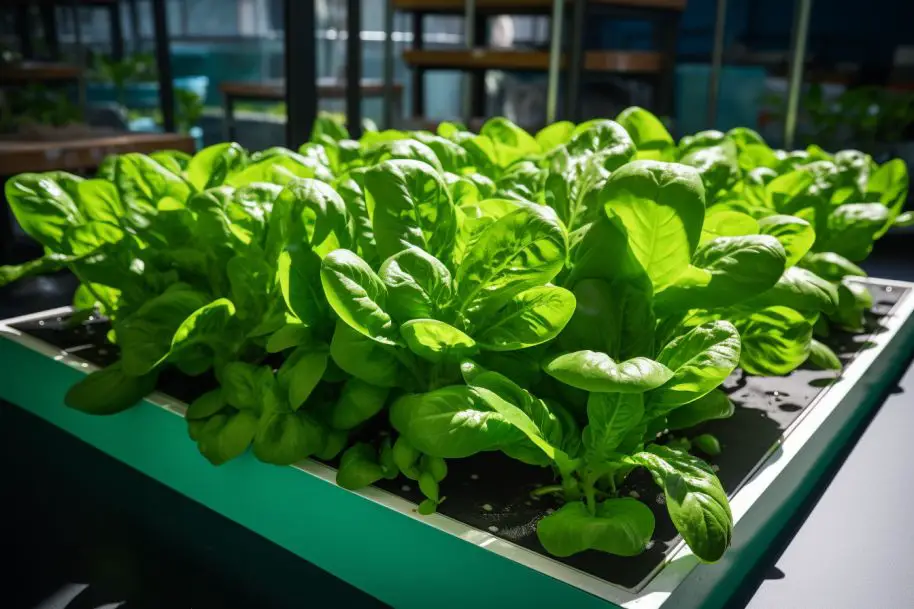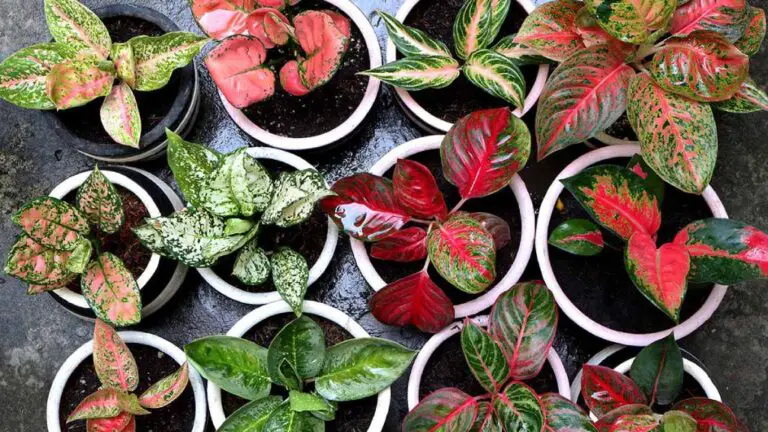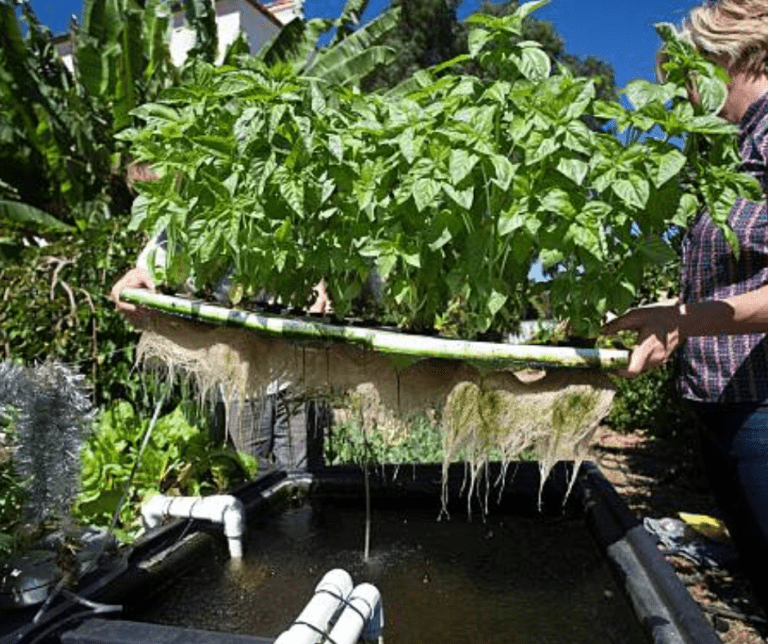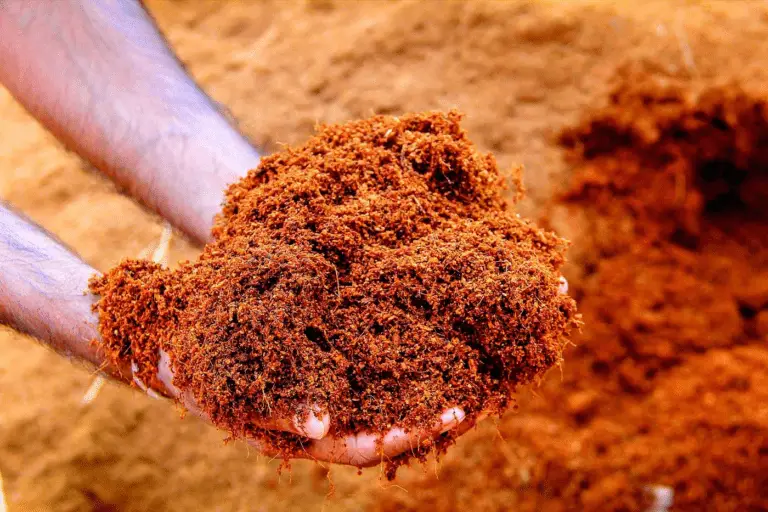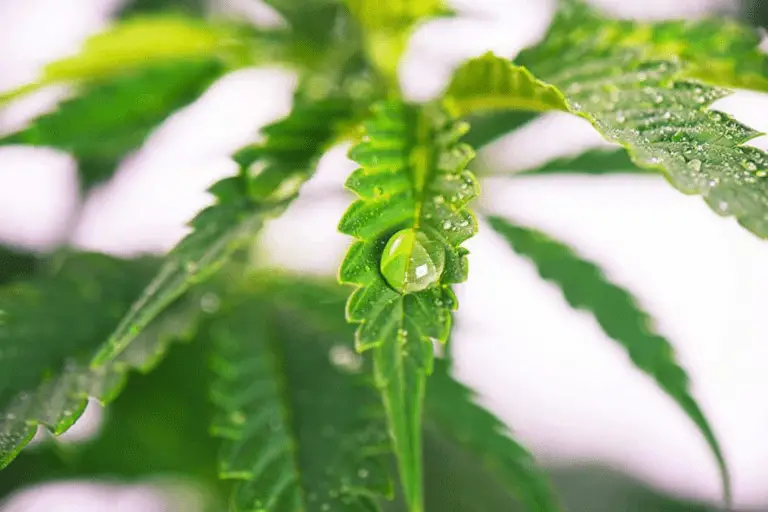Hydroponic Spinach: How to Grow Healthy and Delicious Spinach in Water
Did you know you can grow lush, vibrant spinach without soil? Welcome to the world of hydroponics, where water is the magic ingredient for healthy and delicious greens. In this guide, we’ll dive into the fascinating realm of hydroponic spinach cultivation, exploring everything from setup to maintenance. Whether you’re a seasoned gardener or a curious beginner, you’ll discover tips and tricks to ensure your spinach thrives in water. From nutrient solutions to ideal growing conditions, we’ve got you covered. Say goodbye to soil-related woes and hello to a bountiful harvest of nutrient-rich spinach. Get ready to embark on a journey of hydroponic gardening success!
Table of Contents
The Advantages of Hydroponic Cultivation for Growing Spinach
Hydroponic cultivation offers numerous advantages when it comes to growing spinach.

- Optimized Growing Conditions:
- Hydroponics allows precise control over water, nutrients, and oxygen delivery to spinach roots.
- This optimization leads to higher yields and faster growth rates compared to traditional soil-based methods.
- Space Efficiency:
- Vertical or stacked hydroponic systems maximize vertical space utilization.
- Spinach can be grown in smaller areas like balconies or indoor gardens, making it ideal for urban gardening.
- Reduced Risks and Challenges:
- Hydroponics eliminates soil-borne diseases and weed growth.
- Consistent environmental control minimizes risks from unpredictable weather, pests, and diseases.
- Sustainability:
- Recycled nutrient solutions reduce water consumption.
- Fewer pesticides or herbicides are needed, making hydroponics a sustainable choice for spinach cultivation. 🌱
In summary, hydroponic cultivation of spinach offers several advantages, including enhanced control over growing conditions, increased yields, efficient use of space, and the ability to avoid soil-borne diseases. These advantages make hydroponics an appealing choice for both gardening enthusiasts and commercial growers, allowing them to enjoy a steady supply of fresh and nutritious spinach throughout the year.
Understanding the Nutritional Benefits of Spinach
Spinach is a leafy green vegetable that is well-known for its exceptional nutritional value.
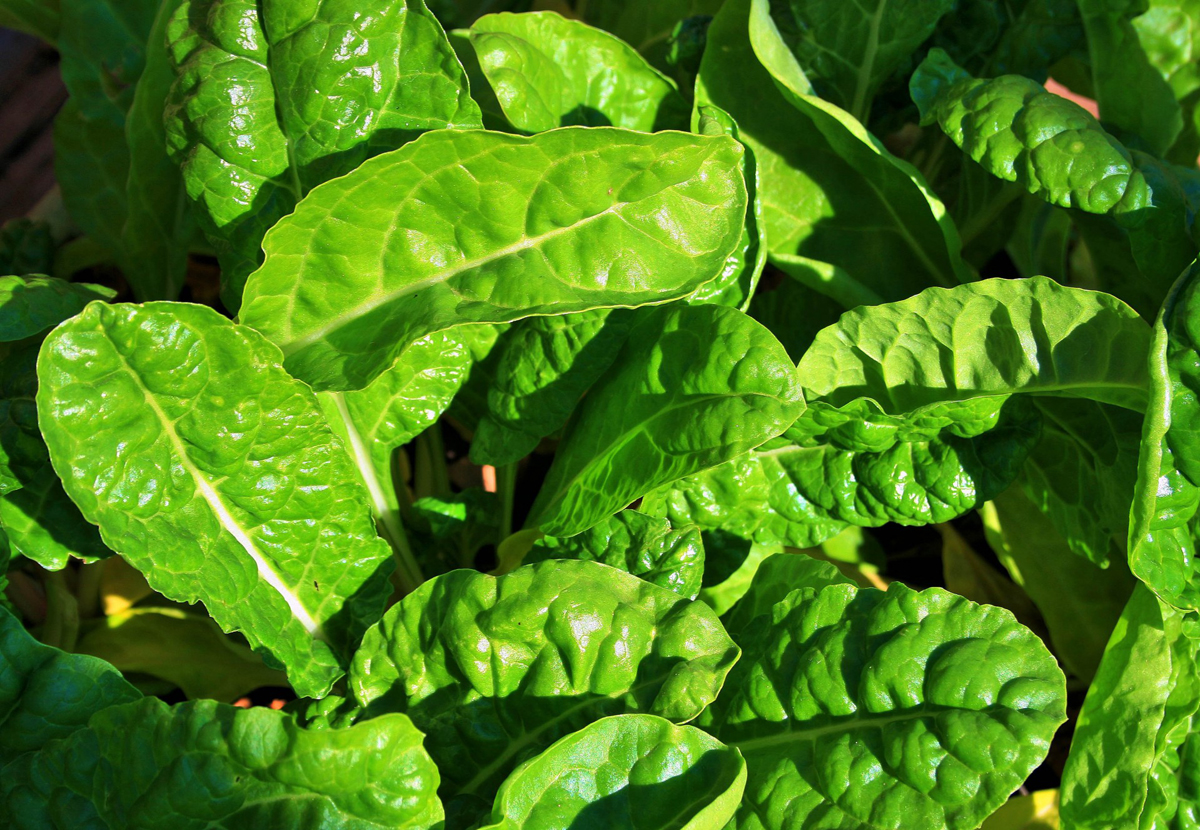
- Nutrient Powerhouse: Spinach is packed with essential vitamins, minerals, and antioxidants, earning its status as a superfood.
- Vitamin-rich: It’s a rich source of vitamins A, C, and K, as well as folate, iron, and calcium, providing a comprehensive array of nutrients for overall health.
- Eye Health Support: Spinach contains beneficial compounds like lutein and zeaxanthin, known to promote healthy vision.
- Vitamin K Boost: With its high vitamin K content, spinach contributes to crucial functions like blood clotting and bone health.
- Weight Management: Low in calories and high in fiber, spinach is an ideal choice for weight management, aiding digestion and promoting a feeling of fullness.
- Satisfying and Nutritious: Whether you’re aiming to shed pounds or maintain a healthy weight, spinach offers a satisfying option to keep you nourished and satisfied.
Choosing the Right Hydroponic System for Growing Spinach
When it comes to growing spinach in a hydroponic system, choosing the right setup is crucial for maximizing productivity and ensuring optimal growth conditions. There are several types of hydroponic systems available, each with its own advantages and considerations.
-hydroponics.jpg)
- Nutrient Film Technique (NFT) System:
- A thin film of nutrient-rich water flows through channels.
- Roots uptake nutrients efficiently due to direct exposure.
- Highly water-efficient and evenly distributes nutrients.
- Continuous water flow oxygenates roots and prevents stagnation.
- Ideal for spinach cultivation.
- Deep Water Culture (DWC) System:
- Roots are submerged in a nutrient solution.
- Continuous aeration provides ample oxygen to roots.
- Simple and cost-effective system.
- Popular among beginner hydroponic growers.
- Ensures rapid growth and healthy spinach plants.
Feel free to explore these systems further or ask if you have any more questions! 🌿🌱
Selecting the Ideal Spinach Varieties for Hydroponic Cultivation
When it comes to hydroponic cultivation of spinach, selecting the right varieties is crucial for ensuring successful and bountiful yields. Not all spinach varieties are well-suited for hydroponic systems, so it is important to choose those that thrive in this specific growing environment.

- Compact Growth Habit:
- Choose compact spinach varieties to maximize vertical growing space.
- Compact plants can be grown closer together, optimizing space utilization.
- Varieties like Baby’s Leaf or Space are excellent options.
- Maturity Time:
- Some spinach varieties mature faster than others.
- Fast-growing varieties like Tyee or Emperor allow quicker harvests.
- Early maturity ensures a continuous supply of fresh spinach.
- Flavor and Nutrition:
- Consider flavor and nutritional qualities.
- Spinach is rich in vitamins, minerals, and antioxidants.
- Varieties like Bloomsdale or Malabar offer excellent flavor and nutrients.
By carefully selecting spinach varieties that are well-suited for hydroponic cultivation based on their growth habit, maturity time, and flavor, growers can set their hydroponic systems up for success and enjoy a steady supply of fresh, nutritious spinach year-round. So, take the time to research and choose the ideal spinach varieties that will thrive in your hydroponic setup, and you will be rewarded with a fruitful and satisfying gardening experience.
Preparing the Nutrient Solution for Hydroponic Spinach
Preparing the nutrient solution is a crucial step in ensuring successful hydroponic cultivation of spinach. As spinach has specific nutritional requirements, it is essential to provide the plant with a nutrient solution that meets its needs throughout its growth cycle.
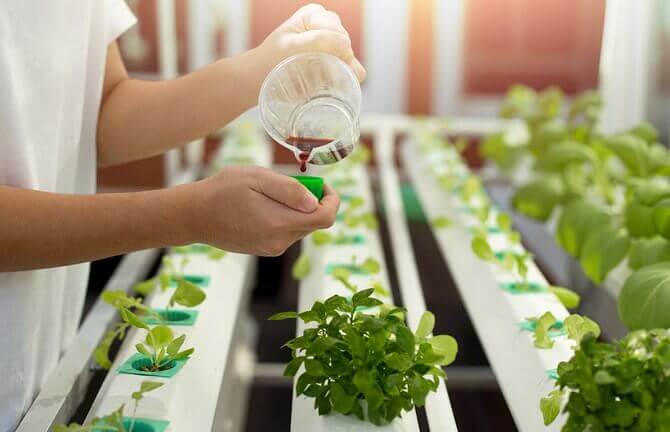
- Water Quality: Start with a high-quality water source free from contaminants to ensure healthy spinach growth.
- pH Adjustment: Adjust the water pH to the optimal range for spinach, typically between 5.5 and 6.5, using pH adjusters like phosphoric acid or potassium hydroxide.
- Balanced Nutrient Blend: Create a complete nutrient solution by adding a balanced blend of essential nutrients, including macronutrients (N, P, K) and micronutrients (Fe, Mn, Zn).
- Even Distribution: Ensure the nutrient solution is well-mixed and evenly distributed throughout the hydroponic system to provide all the spinach plants with the necessary nutrients.
- Maintenance: Regularly monitor and adjust the nutrient solution to meet the changing needs of spinach plants as they grow, ensuring vigorous growth and high yields.
- Variability Consideration: Note that nutrient requirements may vary depending on the specific hydroponic system and the stage of spinach growth, so adjustments may be necessary for optimal results.
Therefore, it is recommended to monitor the nutrient solution regularly and make adjustments as needed to provide the best possible conditions for growing healthy and nutritious hydroponic spinach.
Using Humboldts Secret Liquid Hydroponic Fertilizer has been a game-changer in my hydroponic gardening endeavors. This specialized formula delivers a precise blend of nutrients essential for optimal plant growth and development. Its liquid form allows for easy and accurate dosing, ensuring my plants receive the nutrients they need for healthy growth. With fast absorption and visible results, this fertilizer has transformed my hydroponic system into a thriving oasis of greenery. Whether you’re a beginner or experienced hydroponic gardener, Humboldts Secret Fertilizer is a must-have for achieving vibrant and vigorous plants.
- Specialized Formula: Designed specifically for hydroponic systems, providing a balanced blend of nutrients essential for plant growth and development.
- Convenience: Liquid form makes it easy to measure and apply, ensuring precise dosing for optimal plant nutrition.
- Fast Absorption: Liquid fertilizers are quickly absorbed by plants, allowing for rapid nutrient uptake and visible results.
- Customizable: Some liquid fertilizers allow for customization of nutrient ratios, catering to the specific needs of different plant varieties or growth stages.
- pH Regulation: Some liquid fertilizers include pH buffers or adjusters, helping to maintain the optimal pH range in hydroponic nutrient solutions.
- Reduced Risk of Clogging: Liquid fertilizers are less likely to clog irrigation systems compared to powdered or granular fertilizers.
- Long Shelf Life: Properly stored liquid fertilizers typically have a long shelf life, allowing for extended use without degradation of nutrient quality.
- Cost: Liquid fertilizers for hydroponic systems can be more expensive than traditional soil fertilizers, potentially increasing the overall cost of hydroponic gardening.
- Storage Requirements: Liquid fertilizers may require specific storage conditions to maintain effectiveness, such as avoiding extreme temperatures or exposure to sunlight.
- Potential for Overfertilization: Liquid fertilizers are highly concentrated, increasing the risk of overfertilization if not used according to instructions, which can lead to nutrient imbalances or plant damage.
- Limited Nutrient Availability: Some liquid fertilizers may not contain a comprehensive range of micronutrients, requiring supplementation for specific plant needs.
- Environmental Impact: Production and use of liquid fertilizers may have environmental implications, including pollution of waterways and disruption of ecosystems, especially if not used responsibly.
- Dependency: Continuous use of liquid fertilizers may lead to dependency in plants, reducing their ability to absorb nutrients from the natural environment or organic sources.
Providing Optimal Lighting Conditions for Spinach Growth
To ensure optimal growth and development of spinach in a hydroponic system, providing the right lighting conditions is crucial. Spinach is a leafy green vegetable that requires an adequate amount of light for photosynthesis, the process through which plants convert light energy into chemical energy needed for growth.
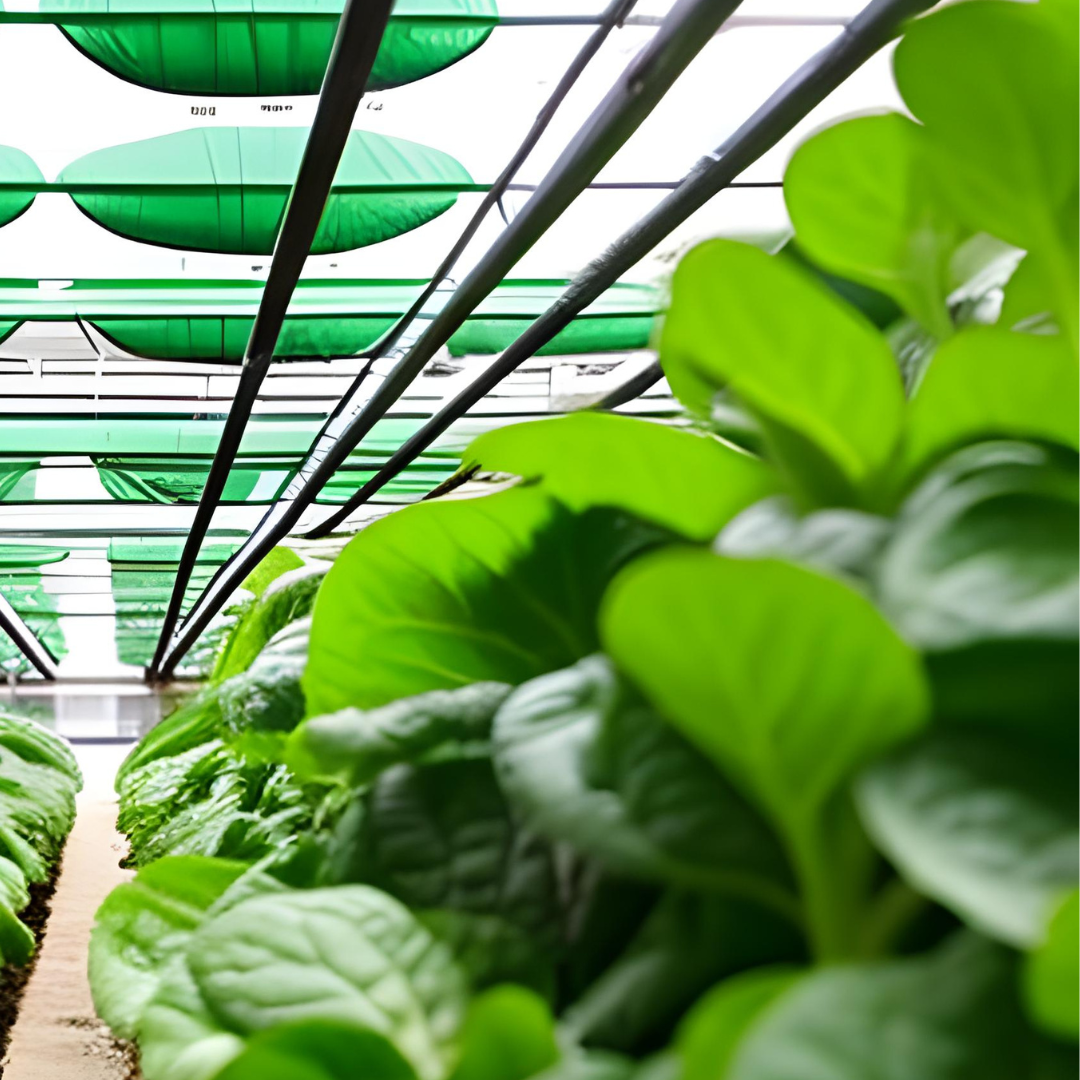
- Optimal Light Duration: Aim for 14 to 16 hours of light per day to encourage vigorous vegetative growth and maximize leaf production in spinach plants.
- Spectrum Selection: Choose lighting systems that emit the right spectrum of light, with a combination of blue and red wavelengths ideal for spinach growth, mimicking natural outdoor light.
- LED Lights: LED lights are a popular choice for hydroponic spinach cultivation due to their energy efficiency, durability, and ability to emit specific color spectrums tailored to plants’ needs.
- Fluorescent Options: Alternatively, fluorescent lights such as T5 tubes can also be effective and budget-friendly options for providing the necessary light spectrum for spinach plants.
- Consideration for Growth: Ensure that the selected lighting system provides adequate coverage and intensity to all spinach plants in the hydroponic setup, promoting uniform growth and development.
- Monitoring and Adjustment: Regularly monitor light levels and adjust the duration and intensity as needed to optimize spinach growth and overall crop health.
Incorporating T5 fluorescent tubes into my hydroponic growing setup has been a game-changer. The bright and uniform light emitted by these tubes ensures consistent and optimal lighting conditions for my plants throughout their growth cycle. Not only are they energy-efficient, helping to keep electricity costs down, but they also provide the perfect spectrum for promoting healthy plant growth and maximizing yields. Their compact size and versatility make them ideal for fitting into my grow space, and their long lifespan means I can rely on them for consistent performance harvest after harvest. Overall, T5 fluorescent tubes have significantly enhanced the success of my hydroponic growing operation.
✅ Bright Lighting: T5 tubes produce bright and uniform light, making them suitable for various applications, including indoor gardening, task lighting, and commercial spaces.
✅ Long Lifespan: T5 fluorescent tubes have a longer lifespan compared to incandescent bulbs, resulting in fewer replacements and maintenance costs over time.
✅ Compact Size: T5 tubes are relatively compact, making them suitable for use in space-constrained environments or fixtures with limited space.
✅ Color Options: T5 fluorescent tubes are available in a range of color temperatures, allowing users to choose between warm or cool light depending on their preferences or specific lighting requirements.
❌ Mercury Content: Like all fluorescent bulbs, T5 tubes contain a small amount of mercury, posing environmental risks if not disposed of properly.
❌ Flickering and Humming: Some T5 fluorescent tubes may flicker or produce a humming noise, especially when they are reaching the end of their lifespan, which can be annoying or distracting in certain settings.
❌ Limited Dimming Options: T5 fluorescent tubes may have limited dimming capabilities compared to other types of lighting, restricting their use in environments where dimming control is desired.
❌ Warm-Up Time: T5 fluorescent tubes may require a brief warm-up period before reaching full brightness, which can be inconvenient in situations where instant lighting is needed.
Maintaining the Right Temperature and Humidity Levels for Hydroponic Spinach
Maintaining the right temperature and humidity levels is crucial for the successful cultivation of hydroponic spinach. With the absence of soil, it is essential to create an environment that promotes healthy growth and maximizes yield.
Keep the hydroponic system between 60°F and 70°F (15°C and 21°C).
This range promotes optimal nutrient uptake and vigorous growth.
Regularly monitor the temperature using a reliable thermometer and adjust as needed.
Aim for a humidity levels between 40% and 60%.
High humidity can lead to diseases like powdery mildew and damping-off.
Low humidity may cause water stress.
Use a hygrometer to monitor humidity levels and consider ventilation techniques (fans or extractors) to regulate moisture effectively.
By carefully managing the temperature and humidity levels in your hydroponic system, you can create optimal growing conditions for your spinach, leading to healthy, vibrant plants and a bountiful harvest.
Proper pH and EC Levels for Successful Spinach Cultivation
Achieving proper pH and EC levels is paramount for successful spinach cultivation in a hydroponic system. pH refers to the acidity or alkalinity of the nutrient solution, while EC (Electrical Conductivity) measures the solution’s salinity, providing an indication of its nutrient concentration.
- pH Level:
- Keep the hydroponic system pH between 6.0 and 6.5 (slightly acidic).
- Regularly monitor pH levels.
- Adjust using pH balancing solutions or regulators.
- Ensures efficient nutrient absorption and healthy growth.
- Electrical Conductivity (EC) Levels:
- Maintain EC levels between 1.5 and 2.5 mS/cm.
- Too low EC can lead to nutrient deficiencies or toxicities in spinach plants.
- Excessive EC can cause imbalances or nutrient burn.
- Regular monitoring and adjustment are crucial.
By paying attention to pH and EC, you’ll create an optimal environment for robust spinach growth. In the next section, we will delve into the techniques of seeding and germinating spinach seeds in a hydroponic system, setting the foundation for robust plant development.
Seeding and Germinating Spinach Seeds in a Hydroponic System
Seeding and germinating spinach seeds in a hydroponic system is an essential step towards achieving a healthy and bountiful crop. By carefully following the correct procedures, you can ensure the successful establishment of your spinach seeds and set the stage for optimal growth and development.

- Seed Selection: Choose high-quality spinach seeds specifically bred or adapted for hydroponic cultivation to ensure superior performance in terms of yield and disease resistance.
- Variety Consideration: Consider factors like leaf color, texture, and taste to select a spinach variety that aligns with your preferences and growing goals.
- Germination Environment: Provide proper moisture levels and maintain consistent temperatures between 68-75°F (20-24°C) to enhance germination rates.
- Use of Germination Dome: Some hydroponic gardeners opt for a germination dome or tray to create a controlled and humid environment, promoting faster and more uniform seedling emergence.
- Planting Depth: Follow the recommended planting depth as provided by the seed supplier or through prior research when sowing spinach seeds.
- Growing Medium: Use a fine, well-draining growing medium to gently press the seeds into, ensuring they are covered to the appropriate depth for optimal germination.
- Light Requirements: While spinach seeds typically germinate in darkness, consult your seed variety for any specific light requirements.
- Attention to Detail: Pay close attention to seed quality, provide optimal germination conditions, and follow recommended guidelines to increase the success of seeding and germinating spinach seeds in your hydroponic system.
In the next section, we will delve into the critical steps of transplanting seedlings and ensuring healthy root development to further nurture and sustain your spinach crop.
I recently tried these high-quality spinach seeds in my hydroponic setup, and I’m impressed with the results. The seeds germinated quickly and produced healthy, vibrant spinach plants. Their perpetual harvest feature ensures a continuous supply of fresh greens, perfect for my indoor gardening needs. Despite the initial investment, the quality and convenience justify the cost. Overall, I highly recommend these seeds for anyone looking to grow nutritious spinach hydroponically.
- High-Quality Seeds: The product offers spinach seeds that are known for their quality and germination rate.
- Perpetual Harvest: These seeds enable a perpetual harvest, meaning you can continuously grow spinach without the need to purchase seeds repeatedly.
- Suitable for Gardens: Ideal for both outdoor and indoor gardening, providing flexibility for different gardening setups.
- Versatile Use: Spinach is a versatile vegetable that can be used in various dishes, making it a valuable addition to any garden.
- Organic Option: For those interested in organic gardening, these seeds provide an option to grow spinach without synthetic pesticides or fertilizers.
- Price: Some may find the price of the seeds relatively high compared to other options on the market.
- Seed Quantity: The quantity of seeds provided may not be sufficient for large-scale or commercial gardening operations.
- Germination Variability: While advertised as high-quality seeds, there may be variability in germination rates, leading to inconsistent growth outcomes.
- Shelf Life: Like all seeds, there’s a limited shelf life, so if not stored properly, they may lose viability over time.
- Environmental Factors: Success in growing spinach depends on various environmental factors such as soil quality, temperature, and sunlight, which may affect overall yield and performance.
Transplanting Seedlings and Ensuring Healthy Root Development
When it comes to transplanting seedlings in a hydroponic system, ensuring healthy root development is crucial for the success of your spinach cultivation. The root system is the lifeline of any plant, providing essential nutrients and water uptake. Therefore, it is important to follow the proper techniques to promote robust root growth.
- Healthy Seedlings:
- Choose well-established seedlings with strong root systems.
- Look for signs of vigorous growth.
- Gentle Handling:
- Handle seedlings gently to avoid root damage.
- Carefully remove them from their original growing medium.
- Transplanting Process:
- Place seedlings into the hydroponic system.
- Ensure roots are well-covered with the growing medium or substrate.
- Optimal Conditions:
- Monitor temperature and humidity levels:
- Keep the system between 60°F and 70°F (15°C and 21°C).
- Maintain humidity between 40% and 60%.
- Regularly check pH and EC levels in the nutrient solution:
- pH range: 6.0 to 6.5 (slightly acidic).
- EC range: 1.5 to 2.5 mS/cm.
- Monitor temperature and humidity levels:
By taking these steps and implementing proper care during the transplanting process, you can encourage healthy root development in your hydroponic spinach cultivation. A strong and robust root system will promote overall plant growth and help maximize your yield.
Implementing Effective Pest and Disease Control Measures for Hydroponic Spinach
Effective pest and disease control measures are crucial for successful hydroponic spinach cultivation. By implementing appropriate strategies, gardeners can prevent the infestation of pests and the spread of diseases, ensuring healthy and thriving spinach plants.
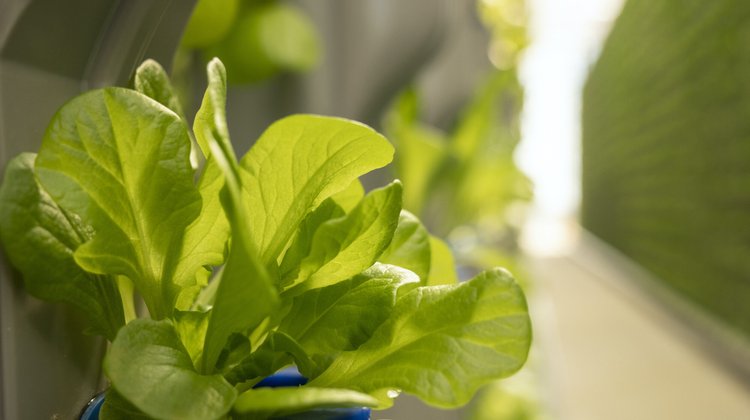
- Biological Controls: Utilize beneficial insects like ladybugs or predatory mites to control common pests like aphids or spider , reducing the need for harmful chemical sprays.
- Natural Predators: Introduce predators that feed on pests, helping to minimize pest populations and prevent damage to spinach plants.
- Ecosystem Diversity: Foster a diverse and balanced ecosystem within the hydroponic setup to naturally deter pests and minimize infestation risks.
- Regular Monitoring: Conduct frequent inspections of plants to detect signs of infestation or unusual symptoms early, allowing for prompt intervention.
- Early Intervention: Take action at the first sign of pest or disease issues, such as removing affected leaves or isolating infected plants, to prevent further spread.
- Organic Solutions: Consider the use of organic fungicides or biostimulants to strengthen plant defenses, following product instructions and ensuring suitability for hydroponic systems.
- Proactive Approach: Implement effective pest and disease control measures to maintain plant health and achieve abundant yields, promoting sustainability and environmental friendliness.
- Benefits of Control Measures: By employing biological controls, regular monitoring, and targeted interventions, hydroponic gardeners can enjoy fresh and nutritious spinach throughout the growing season while minimizing environmental impact.
Thus, hydroponic gardeners can enjoy the benefits of fresh and nutritious spinach throughout the growing season.
Essential Nutrient Management for Consistent Spinach Growth and Yield
To ensure consistent spinach growth and yield in a hydroponic system, proper nutrient management is essential.
- Macronutrients:
- Nitrogen (N): Essential for leaf development.
- Phosphorus (P): Supports root development and overall plant health.
- Potassium (K): Aids in water regulation, nutrient uptake, and disease resistance.
- Micronutrients:
- Calcium (Ca), Magnesium (Mg), Iron (Fe), Manganese (Mn), and others.
- Vital for photosynthesis and enzyme activation.
- Deficiencies can lead to stunted growth and nutrient imbalances.
- Nutrient Balance:
- Regularly monitor pH and EC levels in the nutrient solution.
- pH range: 5.5 to 6.5 (slightly acidic).
- EC range: 1.8 to 2.5 mS/cm.
By carefully managing and adjusting the nutrient solution’s composition, pH, and EC levels, hydroponic growers can provide spinach plants with the optimal nutritional support they need for robust growth and high yields.
| Essential Nutrient Management for Spinach | Key Actions and Considerations |
|---|---|
| 1. Soil Testing and Analysis | – Initial Soil Test: Conduct a soil test to assess nutrient levels. |
| – Regular Monitoring: Periodically test to track nutrient changes. | |
| 2. Nitrogen (N) Application | – Early Growth Stages: Apply nitrogen during early growth for leaf development. |
| – Avoid Excessive Nitrogen: High nitrogen can lead to excessive foliage at the expense of yield. | |
| 3. Phosphorus (P) Application | – Root Development: Apply phosphorus for strong root development. |
| – Critical Growth Stages: Apply during planting and early growth. | |
| 4. Potassium (K) Application | – Overall Plant Health: Potassium supports overall plant health. |
| – Disease Resistance: Adequate potassium enhances disease resistance. | |
| 5. Micronutrients Consideration | – Boron, Iron, and Magnesium: Ensure sufficient levels of essential micronutrients. |
| – Visual Symptoms: Monitor for signs of micronutrient deficiencies. | |
| 6. pH Management | – Optimal pH Range: Maintain soil pH within the ideal range for nutrient availability. |
| – Lime Application: Adjust pH if it deviates from the recommended range. | |
| 7. Fertilizer Application Techniques | – Broadcast Application: Spread fertilizers evenly over the soil surface for uniform nutrient distribution. |
| – Incorporate into Soil: Mix fertilizers into the soil during planting or cultivation. | |
| 8. Organic Matter and Mulching | – Organic Amendments: Incorporate organic matter to improve soil structure and nutrient retention. |
| – Mulching Benefits: Mulch helps conserve moisture and moderates soil temperature. | |
| 9. Water Management | – Consistent Moisture: Ensure consistent soil moisture for optimal nutrient uptake. |
| – Avoid Water Stress: Prevent water stress, as it affects nutrient absorption. |
Harvesting and Enjoying Fresh, Nutritious Hydroponic Spinach
Hydroponic cultivation of spinach offers numerous advantages, including the ability to harvest and enjoy fresh, nutritious spinach throughout the year. With this innovative growing technique, gardeners can bypass traditional outdoor growing limitations and enjoy a continuous supply of vibrant green leaves packed with essential nutrients.
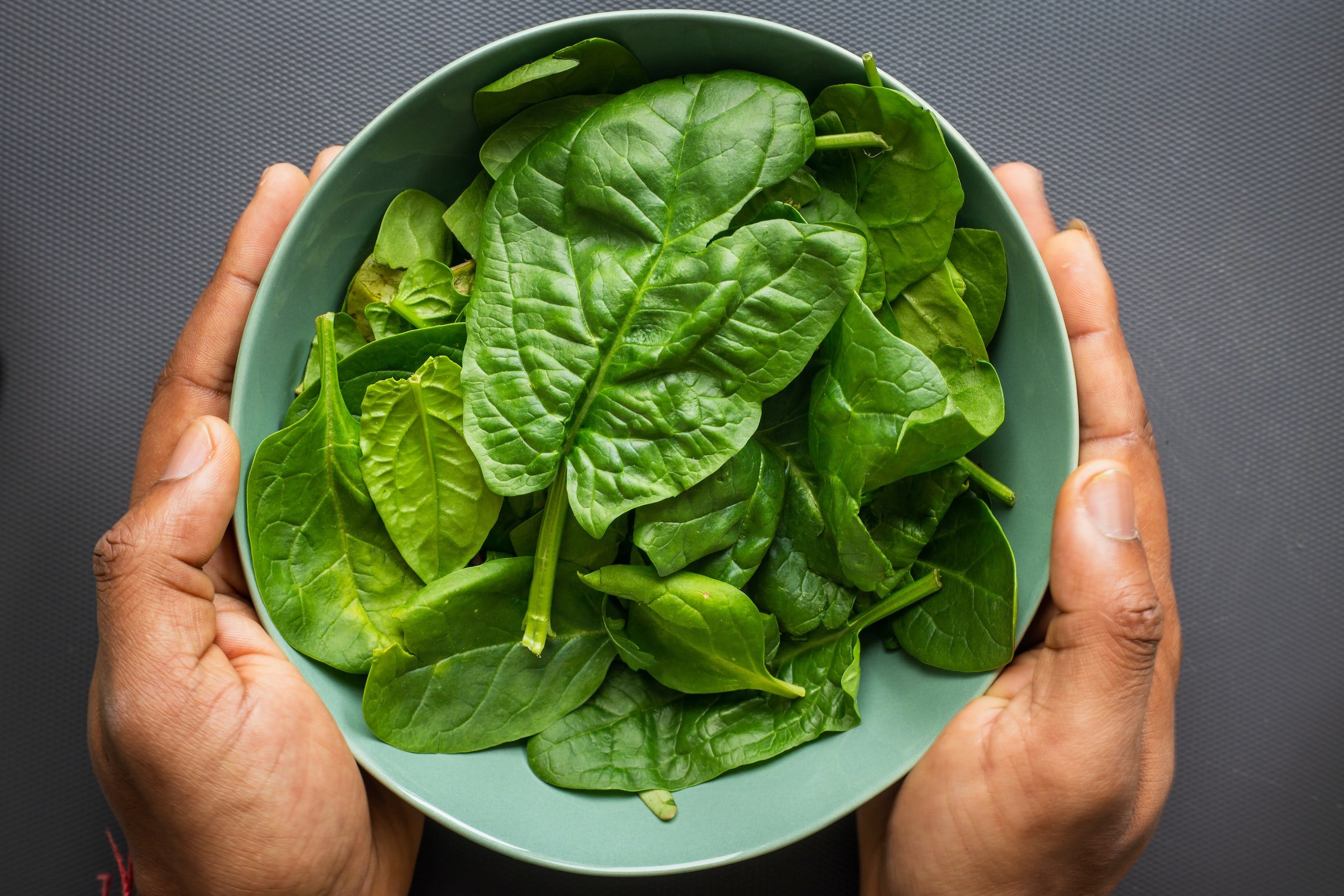
- Timing is Key: Harvest hydroponic spinach when leaves reach 4 to 6 inches tall for optimal flavor and texture.
- Gentle Removal: Carefully pluck outer leaves starting from the bottom, allowing inner leaves to continue growing for a prolonged harvest.
- Continuous Growth: By harvesting outer leaves, you encourage continuous growth and ensure a bountiful yield throughout the plant’s life cycle.
- Year-Round Enjoyment: With hydroponics, enjoy fresh spinach regardless of the season, providing a constant supply of nutritious greens.
- Versatile Usage: Incorporate harvested spinach into salads, smoothies, or various dishes to add flavor and nutritional value to your meals.
- Nutrient-Rich Delight: Hydroponic spinach offers a nutrient-rich addition to your diet, supporting overall health and well-being with its abundance of vitamins and minerals.
- Culinary Creativity: Get creative with spinach in the kitchen, exploring different recipes and ways to incorporate this vibrant green into your favorite dishes.
- Healthy Lifestyle Support: Enjoy the taste and nutritional benefits of hydroponic spinach as part of a balanced diet, promoting a healthy and fulfilling lifestyle.
So, why not embark on the hydroponic journey and experience the joy of harvesting and enjoying fresh, nutritious spinach whenever your taste buds desire?
Watch video for more information:
FAQ
What are the advantages of hydroponic cultivation for growing spinach?
Hydroponic cultivation for growing spinach offers advantages such as efficient water usage, controlled nutrient delivery, and the ability to grow spinach in limited space or unfavorable climates.
How do I understand the nutritional benefits of spinach?
Spinach is a nutrient-packed leafy green vegetable that is rich in vitamins
How do I choose the right hydroponic system for growing spinach?
When choosing a hydroponic system for growing spinach, consider factors such as the space available, budget, and desired level of automation. Options include nutrient film technique (NFT), deep water culture (DWC), and aeroponics.
What are the ideal spinach varieties for hydroponic cultivation?
Some spinach varieties that are well-suited for hydroponic cultivation include Bloomsdale, Tyee, and Space.
How do I prepare the nutrient solution for hydroponic spinach?
The nutrient solution for hydroponic spinach should contain essential macronutrients (nitrogen, phosphorus, potassium) and micronutrients (iron, manganese, zinc) in appropriate concentrations. Specific instructions for preparing the solution will depend on the chosen nutrient formula.
What lighting conditions are optimal for spinach growth in hydroponics?
Spinach plants require around 10-12 hours of bright light per day. LED grow lights are often used in hydroponic systems to provide the necessary light spectrum and intensity.
What temperature and humidity levels should be maintained for hydroponic spinach?
Spinach grows best at temperatures between 60-70°F (15-21°C) during the day and slightly cooler at night. The ideal humidity range for spinach cultivation is around 50-60%.
What pH and EC levels are necessary for successful spinach cultivation?
The pH level of the nutrient solution for hydroponic spinach should be maintained between 5.5 and 6.5. The electrical conductivity (EC) of the solution should generally be kept around 1.2-2.2 mS/cm.
How do I seed and germinate spinach seeds in a hydroponic system?
Spinach seeds can be germinated by placing them on a moist paper towel or using seedling trays filled with a germination medium. Keep the seeds in a warm and humid environment until they sprout.
What pest and disease control measures are effective for hydroponic spinach?
Implementing strict hygiene practices, regularly monitoring plants for pests, and using organic pesticides or beneficial insects can help control common pests like aphids or spider mites. Proper crop rotation and disease-resistant varieties can also prevent diseases.
How do I manage essential nutrients for consistent spinach growth and yield?
Regularly monitor the nutrient levels in the solution and make adjustments as needed. Conduct regular nutrient solution changes and maintain a balanced nutrient supply to ensure consistent spinach growth and yield.
When is the best time to harvest hydroponic spinach for fresh consumption?
Hydroponic spinach can be harvested when the leaves are young and tender, usually around 25-35 days after germination. Harvest individual leaves or cut the entire plant just above the crown.

Studied Agricultural Engineering-Plant Protection at University of California, Davis.
Head of Content writing team at Southelmontehydroponics.com

